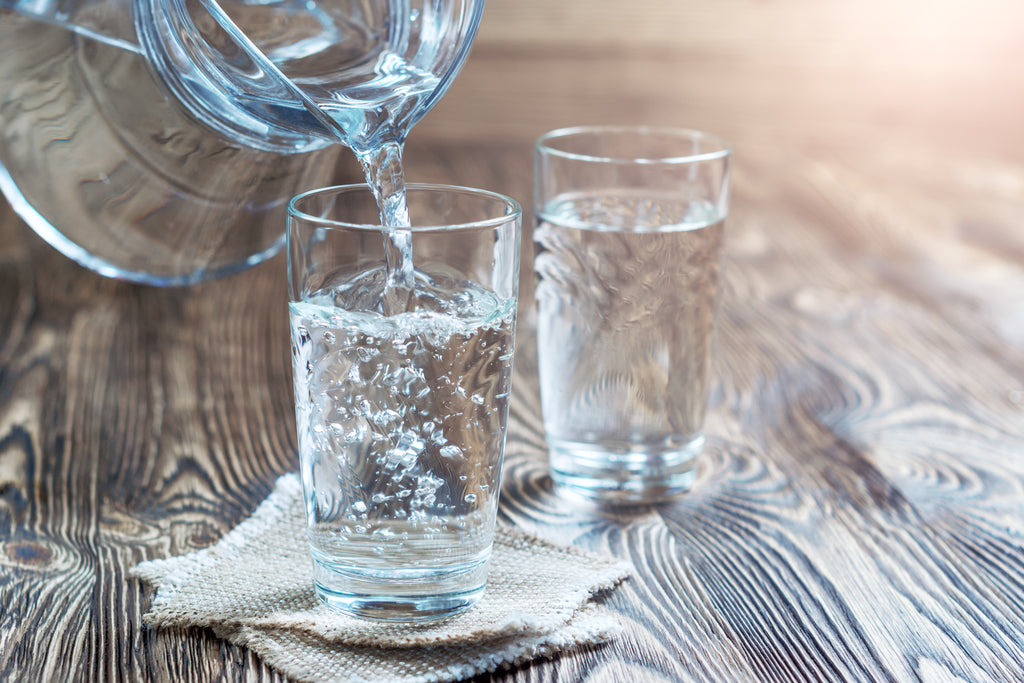
Chemotherapy, while providing lifesaving benefits in treating cancer, can unfortunately come with side effects. Going through this treatment can impact your body and change the way you look and feel. Fatigue, hair loss, nausea, and loss of appetite are common side effects of chemotherapy, but did you know it can affect your skin as well? This process most frequently causes dryness and sensitivity in the skin, which tends to result in redness, itching and discomfort.
With the proper knowledge, you can help alleviate these skin concerns even during treatment. We’ve rounded up 7 tips and simple swaps for your everyday skin care routine to help ease these common symptoms and help you feel your best during treatment.

Drink Plenty of Water
8x8 – The unofficial Golden Rule for daily water consumption. It says that on average, we should be drinking eight, 8-ounce glasses of water each day to combat dehydration. In general, drinking enough water has been shown to increase energy and circulation while regulating digestion, body temperature and blood pressure. During treatment, experts recommend drinking 8-12 (8-ounce glasses) daily, unless advised otherwise by your doctor.
Limit Time and Temperature in the Shower
Short, lukewarm showers are ideal for dry, sensitive skin. Hot temperatures tend to pull moisture out of the skin, which can result in irritation, itching, and overall damage to the surface of our skin. In contrast, drastically cold temperatures are generally uncomfortable and can be harsh on your immune system, especially during treatment. For more detail into the pros and cons of hot and cold showers click here. For perfect balance of benefits, it is best to stick to lukewarm temperatures which are still calming and much kinder on the skin.

Apply Your Moisturizer on Damp Skin
After bathing, it is best to apply a clean and fragrance-free lotion or oil to the skin while it is still damp. Doing so will allow your moisturizer to absorb deeper, locking in moisture and soothing the skin. In this case, think of your skin as a sponge – if you apply soap when it is dry, it doesn’t tend to absorb and suds’ up as well as if you run it under water first. After showering or bathing, pat (don’t rub) your skin gently to remove excess water then apply product while your skin is close to, but not fully dry. We recommend using either an organic cold-pressed oil or a clean moisturizer (free of harsh chemicals and artificial fragrance).
Avoid Harsh Exfoliants
Certain skin care ingredients are designed to remove or enhance the removal of built up skin cells, these will typically be found in the form of scrubs, exfoliants, and peels. While these products have great resurfacing abilities, by nature they may cause irritation to skin that is compromised or sensitive. Be aware of ingredients like Glycolic Acid, other AHA/BHAs, and physical exfoliants (i.e. sugars) during treatment.

Do a Fabric Detox
Our skin encounters various fabrics throughout the day – sheets, blankets, and clothing to name a few. Conventional detergents and softeners used to clean laundry often have irritating chemicals and artificial fragrance which linger on fabrics long after they are washed. As these materials rub against the skin, they can cause redness and itching. Consider swapping your conventional detergent for one that is gentle, clean and fragrance-free. EWG provides an excellent resource for choosing the right one.
Take it one step further by swapping traditional dryer sheets for wool dryer balls, this option is not only more sustainable but will remove yet another source of unnecessary chemicals and fragrance from your routine.
Avoid Alcohol-Based Products
Alcohol and alcohol derivatives tend to dry out the skin and are frequently found in personal care products. Perfumes are not only a common source of alcohol exposure but often contain artificial fragrance which should also be avoided during treatment. Another culprit is alcohol-based toners, which can be replaced with witch hazel or floral based toners instead. During treatment, it is beneficial to be on the lookout for this ingredient on product labels and remove it from your skin care routine wherever possible.

Wear SPF
Skin sensitivity unfortunately increases sun sensitivity. You may often hear that it is always important to wear a light facial SPF every day, but this suggestion becomes far more critical during treatment. To protect the skin from sunburn, apply a sunscreen with at least SPF 30 to exposed areas, apply a lip balm with SPF, wear protective clothing, and limit sun exposure. SPF needs to be used every day regardless of the weather, so don’t skip it – even on a cloudy day! It is recommended to be extra conscious between peak hours of 10am-2pm and to avoid tanning beds.
Understanding how our skin changes during chemotherapy and how to remedy common side effects can help minimize discomfort during the process. By incorporating these 7 steps into your daily routine, you can support and soothe your skin during treatment.



